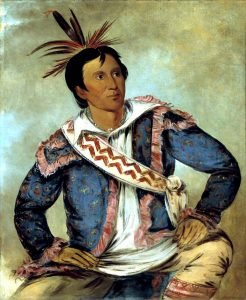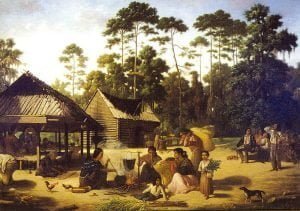Captains entitled to the additional half section, Mushulatubbe’s district
MUSHULATUBBE A list of the Captains entitled to the additional half section, under the nineteenth article of the treaty, in Mushulatubbe’s district Names. Number of acres cultivated Entitled as Captains Total number of Acres Holabe 14 320 480 Adam Fulsom 20 320 640 Joseph Kincade 22 320 640 Suba, or Horse 9 320 320 Talking Warrior 12 320 480 Pistabe 10 320 320 Koehoma 14 320 490 Tanahacho 6 320 320 Isaac James 20 320 640 Sockatubbee 15 320 480 Hoshehoma 12 320 480 Immeleche 14 320 480 Atamemastubbe 12 320 480 Holba 15 320 480 Nashbanawa 12 320 480 … Read more




